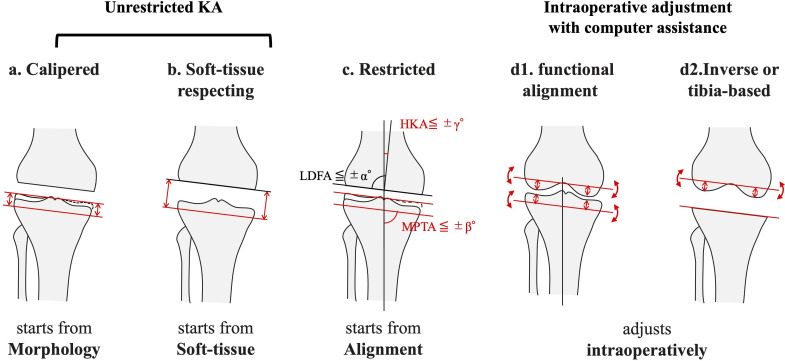Fig. 3.
The variation of deciding the tibial cutting surface in the kinematic alignment total knee arthroplasties (KA-TKAs). a) Calipered (or pure, true) KA technique. The tibia is cut parallel to the tibial articular surface, compensating for the cartilage wear, similar to the femoral side. b) Soft-tissue respecting technique. The tibia is cut parallel to the femoral cutting surface under proper traction, parallel to the distal cutting surface of the femur in extension with respect to the trial component, and parallel to the posterior cutting surface of the femur in flexion. The calipered and soft-tissue respecting approaches are categorized as unrestricted KA. c) Restricted KA technique. A similar bone cut is done within the safe range (e.g. < 5° varus); otherwise, the resection is performed at a defined angle. Intraoperative adjustment with computer assistance: d1) Functional alignment. The tibial cutting surface along with the femoral cutting surface is decided based on the intraoperative information, including alignment and gap under computer assistance. d2). Inverse kinematic alignment or tibia-based KA. In this technique, the alignment of tibial component is decided first, followed by that of femoral component. Note that the femoral cutting line can be altered in these techniques. HKA, hip-knee-ankle angle; LDFA, lateral distal femoral angle; MPTA, medial proximal tibial angle.

